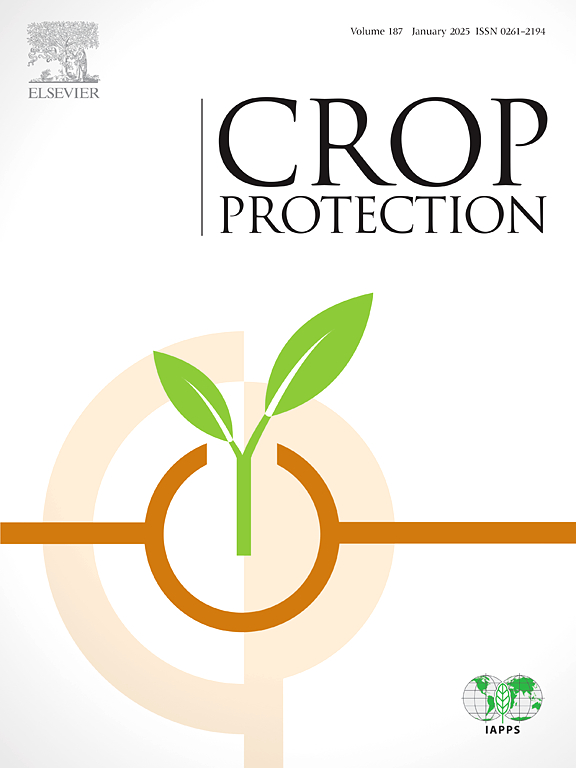Characterization and sustainable management of vector-borne viral pathogens in okra (Abelmoschus esculentus L.)
IF 2.5
2区 农林科学
Q1 AGRONOMY
引用次数: 0
Abstract
Okra (Abelmoschus esculentus L.) is a significant vegetable crop in India, but its cultivation is severely impacted by viral diseases, particularly okra yellow vein mosaic disease (OYVMD).This study was conducted to evaluate the effectiveness of various pest management modules against whiteflies (Bemisia tabaci), the primary vector of OYVMD, and to assess the incidence and severity of OYVMD in okra. The experiment was carried out at the Central Research Station of Odisha University of Agriculture and Technology during the kharif seasons of 2019 and 2020, using a Randomized Complete Block Design (RCBD) with five replications. Four treatments were evaluated: an Integrated Module, a Biointensive Module, a Chemical Module, and an Untreated Control. The results demonstrated that both the Integrated and Chemical modules significantly reduced the whitefly population and managed it effectively throughout the cropping period, with mean populations of 2.19 whiteflies per leaf. These modules also effectively suppressed the incidence and severity of OYVMD with the highest incidence being recorded in bio-intensive module. Molecular characterization of both yellow vein mosaic virus and whiteflies collected from virus infected plants were also done by conducting PCR followed by gel electrophoresis of isolated DNA samples which revealed that the whiteflies from Bhubaneswar grouped phylogenetically with the whitefly isolates from Indonesia, Thailand and China. In case of viruses, okra enation leaf curl virus from Bhubaneswar clustered with Mungbean yellow mosaic virus (MYMV) from Raichur and Hyderabad.
求助全文
约1分钟内获得全文
求助全文
来源期刊

Crop Protection
农林科学-农艺学
CiteScore
6.10
自引率
3.60%
发文量
200
审稿时长
29 days
期刊介绍:
The Editors of Crop Protection especially welcome papers describing an interdisciplinary approach showing how different control strategies can be integrated into practical pest management programs, covering high and low input agricultural systems worldwide. Crop Protection particularly emphasizes the practical aspects of control in the field and for protected crops, and includes work which may lead in the near future to more effective control. The journal does not duplicate the many existing excellent biological science journals, which deal mainly with the more fundamental aspects of plant pathology, applied zoology and weed science. Crop Protection covers all practical aspects of pest, disease and weed control, including the following topics:
-Abiotic damage-
Agronomic control methods-
Assessment of pest and disease damage-
Molecular methods for the detection and assessment of pests and diseases-
Biological control-
Biorational pesticides-
Control of animal pests of world crops-
Control of diseases of crop plants caused by microorganisms-
Control of weeds and integrated management-
Economic considerations-
Effects of plant growth regulators-
Environmental benefits of reduced pesticide use-
Environmental effects of pesticides-
Epidemiology of pests and diseases in relation to control-
GM Crops, and genetic engineering applications-
Importance and control of postharvest crop losses-
Integrated control-
Interrelationships and compatibility among different control strategies-
Invasive species as they relate to implications for crop protection-
Pesticide application methods-
Pest management-
Phytobiomes for pest and disease control-
Resistance management-
Sampling and monitoring schemes for diseases, nematodes, pests and weeds.
 求助内容:
求助内容: 应助结果提醒方式:
应助结果提醒方式:


